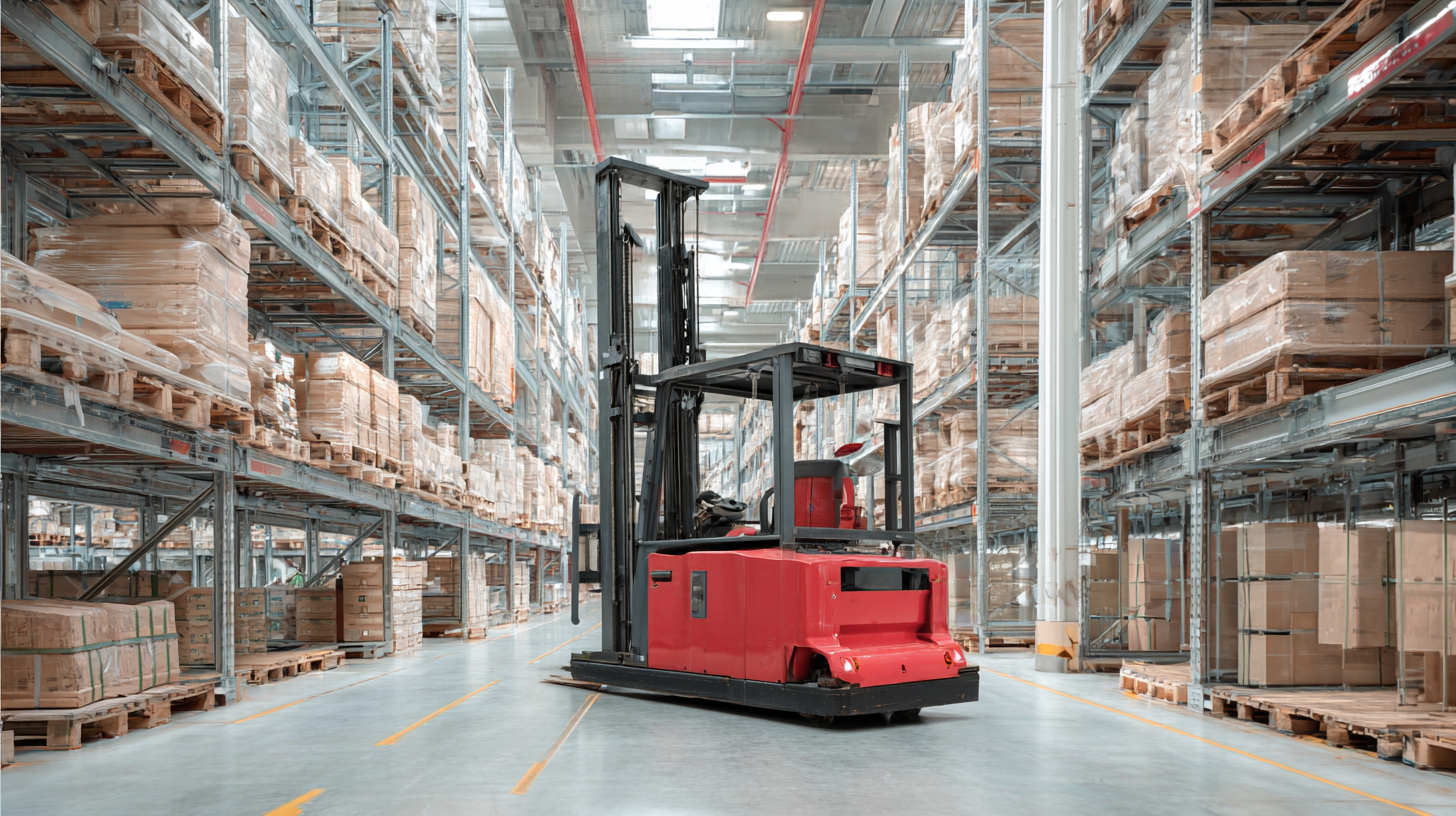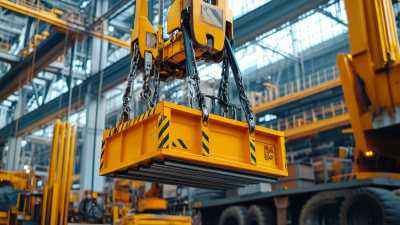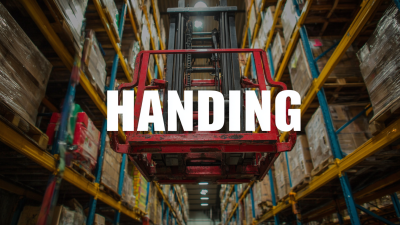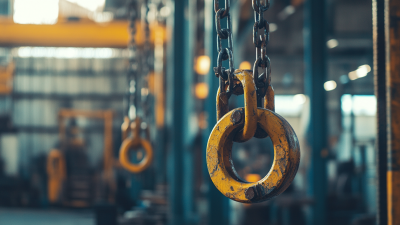Innovative Strategies for Effective Material Handling Products in Modern Warehousing
In the rapidly evolving landscape of modern warehousing, the significance of innovative strategies for effective material handling products cannot be overstated. As businesses strive to enhance operational efficiency and reduce costs, the integration of cutting-edge technologies and best practices in material handling is paramount. This article explores how digital solutions, coupled with proven methodologies, can revolutionize the way warehouse operations manage the flow of goods.

By leveraging data analytics, automation, and smart inventory management systems, warehouses can optimize their material handling processes, ensuring that products are moved swiftly and accurately. In this context, the drive for continuous improvement in material handling products not only boosts productivity but also fosters a safer and more sustainable working environment.
As we delve deeper into these strategies, we will uncover the pivotal role they play in shaping the future of warehousing and logistics.
Understanding the Importance of Material Handling in Modern Warehousing
In modern warehousing, the importance of effective material handling cannot be overstated. According to the Material Handling Industry of America (MHIA), efficient material handling systems can reduce operating costs by up to 20% while enhancing overall productivity. As e-commerce continues to grow exponentially, the demand for innovative material handling solutions becomes even more critical. These advancements not only streamline processes but also enhance safety within the warehouse, reducing the risk of accidents that can result from improper handling techniques.
Moreover, the report by MarketsandMarkets estimates that the global material handling market will reach $210.3 billion by 2026, indicating a robust growth driven by the adoption of automation and robotics. Automated guided vehicles (AGVs) and advanced conveyor systems are revolutionizing how goods move through warehouses, allowing for higher accuracy and speed. Such innovations facilitate the swift response required to meet consumer demands in real-time, positioning companies at the forefront of the competitive logistics landscape. As organizations embrace these strategies, understanding the significance of effective material handling becomes pivotal in ensuring operational efficiency and sustaining growth.
Innovative Strategies for Effective Material Handling Products in Modern Warehousing
Identifying Key Challenges in Material Handling Processes
 In modern warehousing, effective material handling is crucial, yet it faces significant challenges that require innovative strategies. The evolution of technology, particularly artificial intelligence (AI), is pivotal in overcoming these obstacles. Traditional material handling methods are increasingly under pressure to adapt due to operational complexities and the demand for efficiency. Companies must explore new ways to integrate AI into their processes, granting them the ability to manage resources more effectively, track inventory in real time, and anticipate workflow bottlenecks.
In modern warehousing, effective material handling is crucial, yet it faces significant challenges that require innovative strategies. The evolution of technology, particularly artificial intelligence (AI), is pivotal in overcoming these obstacles. Traditional material handling methods are increasingly under pressure to adapt due to operational complexities and the demand for efficiency. Companies must explore new ways to integrate AI into their processes, granting them the ability to manage resources more effectively, track inventory in real time, and anticipate workflow bottlenecks.
Tips for Successful Integration:
- Start with a clear assessment of your current material handling processes to identify specific areas that could benefit from AI innovations.
- Invest in training and resources that empower your workforce to harness new technologies efficiently. Engaging employees in the transition is essential for smooth implementation.
- Monitor evolving technologies continuously and adapt your strategies accordingly to stay competitive in the rapidly changing market.
Additionally, incorporating standardized methodologies can enhance consistency and outcomes in material handling processes. Organizations must look to the broader implications of technological advancements, particularly how digital twins and AI can inform better decision-making and streamline operations. As the landscape shifts, embracing these innovations will not only improve efficiency but also future-proof warehousing practices.
Exploring Technological Innovations for Enhanced Efficiency
In modern warehousing, the integration of technological innovations is crucial for enhancing efficiency in material handling. Automated guided vehicles (AGVs) are transforming the way goods are transported within facilities, reducing the need for manual labor while increasing speed and accuracy. These vehicles can navigate through warehouses, picking up and delivering materials without human intervention, enabling a more streamlined operation. Furthermore, the implementation of real-time tracking systems allows for precise inventory management, ensuring that products are always monitored and available when needed.
Another key innovation is the use of warehouse management systems (WMS) powered by artificial intelligence and machine learning. These systems analyze data to optimize storage spaces and improve picking routes, significantly reducing time spent on order fulfillments. Additionally, advanced robotics are being deployed for tasks such as sorting and packing, allowing for greater consistency and efficiency. With these technologies, warehouses are not only becoming more productive but also adapting to the rising demands of e-commerce and just-in-time inventory strategies, ensuring that they remain competitive in a rapidly evolving market.
Implementing Lean Principles to Optimize Material Flow
Implementing lean principles in modern warehousing is crucial for optimizing material flow and increasing efficiency. A report from the Warehousing Education and Research Council (WERC) highlights that warehouses implementing lean strategies can reduce their operating costs by up to 30%. By streamlining processes and minimizing waste, companies can ensure that materials move more smoothly through their systems. Techniques such as value stream mapping and 5S methodology not only improve workspace organization but also enhance worker productivity.
Furthermore, the use of technology in conjunction with lean principles is critical. According to a study by MHI, 85% of warehouse operators believe that adopting automation technologies can help facilitate a more efficient material flow. Automated guided vehicles (AGVs) and RFID tracking systems can reduce the time spent on manual tasks and provide real-time visibility of inventory levels. This integration of technology fosters a lean environment that supports effective decision-making and maximizes overall operational performance, ultimately leading to higher customer satisfaction and lower operational risks.
Training and Development Strategies for Warehouse Staff Efficiency
 Effective material handling in modern warehousing revolves significantly around the training and development of warehouse staff. As automation and innovative technologies transform the logistics landscape, it becomes crucial for employees to adapt to these changes.
Structured training programs that focus on operating advanced material handling equipment and understanding new software are essential for enhancing efficiency. Empowering staff with the skills they need to navigate modern systems not only reduces errors but also accelerates the overall workflow.
Effective material handling in modern warehousing revolves significantly around the training and development of warehouse staff. As automation and innovative technologies transform the logistics landscape, it becomes crucial for employees to adapt to these changes.
Structured training programs that focus on operating advanced material handling equipment and understanding new software are essential for enhancing efficiency. Empowering staff with the skills they need to navigate modern systems not only reduces errors but also accelerates the overall workflow.
Moreover, ongoing development opportunities, such as workshops and certifications, foster a culture of continuous improvement. By periodically upskilling employees, warehouses can maintain a workforce that is well-versed in the latest handling techniques and safety protocols. Emphasizing teamwork and effective communication during training sessions aids in minimizing discrepancies and enhances problem-solving capabilities among staff. Such initiatives not only boost employee confidence but also significantly improve operational performance, ultimately leading to a more agile and responsive warehousing environment.
Related Posts
-

What You Need to Know About Lifting and Handling Equipment Trends in 2023
-

Harness the Future: Discover Innovative Material Lifts at the 2025 Canton Fair
-

Unlocking Efficiency in Logistics with the Best Lifting and Handling Equipment Techniques
-

What is a Material Lift? Understanding Its Impact on Warehouse Efficiency and Safety Standards
-

Master the Art of Selecting the Best Lifting Products for Your Business
-

5 Key Reasons Why Best Heavy Equipment is Essential for Maximizing Construction Efficiency
